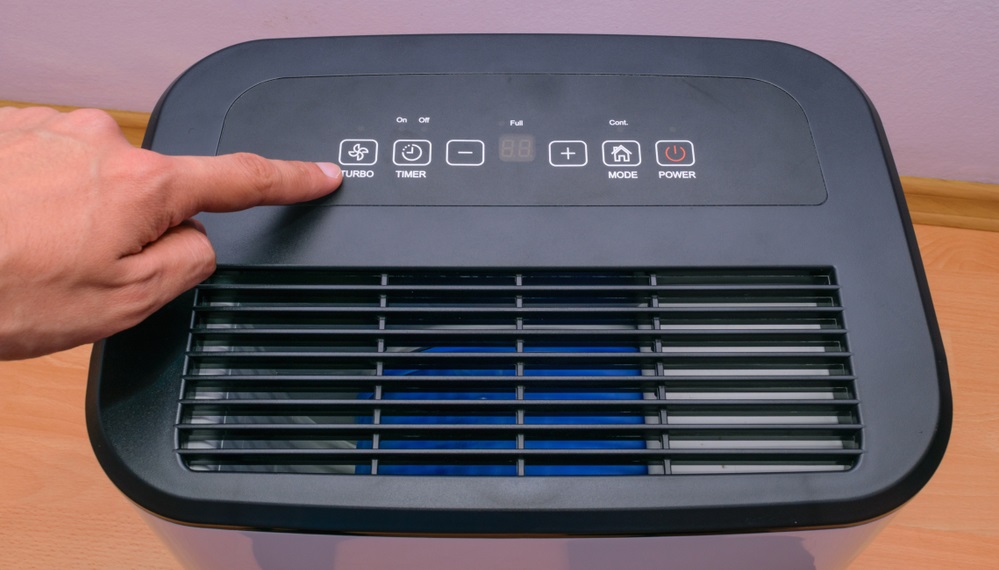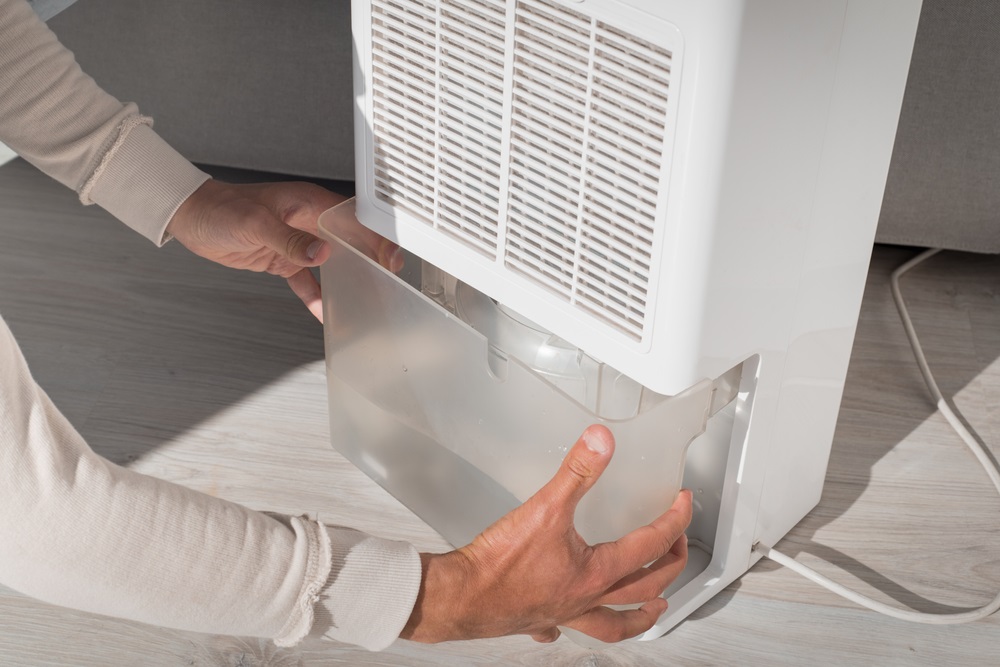
Dehumidifiers are perfect for homes and spaces that are very humid, damp, and uncomfortable. When a room is very humid, the air feels heavy and unpleasant; dehumidifiers work to solve this problem by sucking the moisture out of the air to improve indoor air quality and to maximize that, you should know how to use a dehumidifier properly.
If you’ve never owned one before, though, we know it can be a little confusing to use. After all, if you’re not using it correctly, you might not be reaping the benefits of the excellent air circulation and quality a dehumidifier can provide.
What Kind of Dehumidifier Do You Have?
There are different kinds of dehumidifiers out there, so familiarize yourself with the type you have to understand how it works.
Desiccant Dehumidifier
Desiccant dehumidifiers function by using a large desiccant wheel to suck moisture out of the air to reduce moisture and condensation. These humidifiers are some of the best and work well in drier environments to maintain relative humidity.
Refrigerant Dehumidifiers
A refrigerant dehumidifier works to remove the damp air and filter it over a cold evaporator coil. The coil brings the water below its dew point temperature and cools the air to a comfortable temperature. These are also sometimes called compressor dehumidifiers.
Portable Dehumidifier
As the name suggests, portable humidifiers can be moved around the home wherever the condensation and moisture are the highest. A portable dehumidifier is excellent if you want to maintain a comfortable temperature in an area with fluctuating relative humidity, like a basement or crawl space.
How to Use a Dehumidifier
Set the Humidity Level

Experts recommend setting the humidity level between 30 and 50 percent and 30 to 40 percent for colder locations. If the humidity level is set any higher, it can result in condensation, mold, or mildew, which the dehumidifier should prevent.
Choose a Good Location
The best location for a dehumidifier is typically in the center of a room on a table or shelf.
Some dehumidifiers release pull-in moisture through the top, while others have a vent on the side that needs to be free to suck in moisture. If your dehumidifier is one with a side vent, make sure it has plenty of room to take in the air so it can work efficiently.
Placing it up high and out of reach of pets or children is also a good idea for safety. Accidents happen, and you don’t want a dehumidifier falling on a pet or small child.
Close All Windows and Doors
If you leave windows and doors open, the dehumidifier won’t be able to effectively dehumidify your space.
By closing everything, you ensure the dehumidifier can work to remove moisture from the particular room you find uncomfortable.
Empty the Tank Frequently

As your dehumidifier sucks moisture from the air, it stores it in its water tank. You need to empty this tank regularly, or it will become full. When the tank fills, the dehumidifier will stop working. Some models without sensors will overflow with water, making a mess on your floor or surface.
When you empty the water tank, it is a good opportunity to give the tank a quick cleaning. Cleaning outside of your regular cleaning schedule ensures it stays as safe as possible.
Clean Well
Cleaning the unit is the most important part of using a dehumidifier and keeping it well-maintained. If you do not clean it properly and regularly, it can grow mold and mildew, which is terrible for the health of you and your family.
When dehumidifiers grow mold, it often sends mold spores into the air that you will breathe in. If you don’t take care to clean it, it will decrease the quality of your air and possibly to lead health problems.
Clean the dehumidifier every other week or at least once a month to keep it working well. You can use anti-bacterial dish soap, bleach, and water, or specific cleaning agents for dehumidifiers you can purchase.
Run the air filter under hot water and gently remove dirt and debris build-up. Many dehumidifiers have a light to let you know when it is time to clean the filter. Some also have grills that can become dirty and slow airflow. These need to be wiped down with an anti-bacterial wipe.
Bottom Line
Maintaining a dehumidifier is easy as long as you stay on top of emptying and cleaning it. Once you turn it on and set it to the correct relative humidity level, it only needs a little attention once a week to keep your air comfortable and healthy.
By maintaining your dehumidifier, you can ensure it will work for a long time and effectively improve your air quality.
FAQs
What is the best type of dehumidifier?
There is no answer because different types work better for people with varying needs. Compressor and refrigerant dehumidifiers sometimes make a loud humming or thumping noise because of the fan that spins.
But other dehumidifiers, like desiccant dehumidifiers, can use a significant amount of electricity. Desiccant units often increase electric bills. They also push out hot air, which can be uncomfortable if you use them in the summer months.
Should I use a dehumidifier year-round?
There is no reason not to use your dehumidifier all year, especially if you live in a particularly damp location like Florida or Washington. These areas often produce condensation and relative humidity all year, and having a humidifier will be more comfortable.
But if you live in a place that suffers from very humid and damp seasons like summer and spring, but the air gets much drier in the colder months, you can use the dehumidifier as needed and even store it away when you aren’t using it.
Do I need more than one dehumidifier?
This depends on the size of your home and the capacity of your dehumidifier. If you live in a multi-level home and suffer from damp and humid air in every room, it can be a good idea to get a dehumidifier for every floor. Place the units in hallways so it can improve the atmosphere in all the rooms.
This question is difficult to answer without knowing what space you are aiming to dehumidify. It helps to know how many rooms you want to dehumidify to make this decision.
